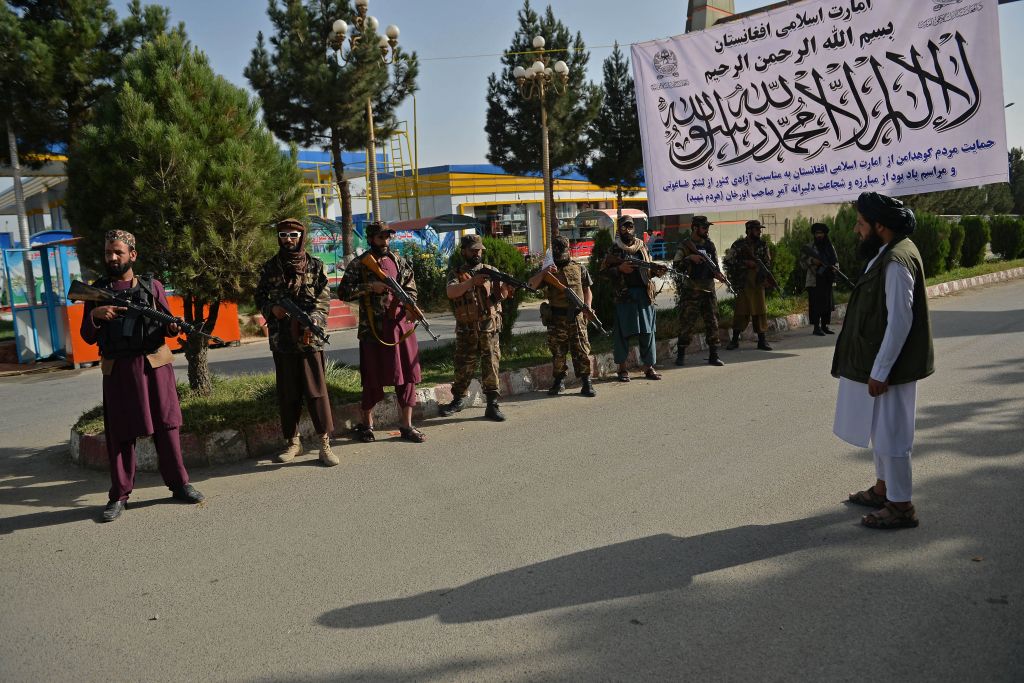The power vacuum that the United States left in Afghanistan after the Biden administration’s chaotic withdrawal in August has largely been filled by the Taliban. But its transition into power has not been seamless or unchallenged.
The Islamic State group appears to be taking advantage of the disarray to regain strength, hamper the Taliban and possibly begin reaching for more international targets, Reuters reported on Tuesday.
The group’s show of power in the midst of chaos does not bode well for the United States, with the Pentagon now predicting that America could become a target for the renewed Islamic State in as little as six months.
The Islamic State in Afghanistan has not dawdled in its mission to spread terror in the midst of the Taliban’s takeover. The Taliban is on high alert after the beheading of one of its fighters in Jalalabad along with multiple suicide bombings at Shiite mosques, Reuters reported.
The Taliban have been fighting the Islamic State group since 2015, and there was no delay or pause during they took over Afghanistan. Almost immediately, the Taliban executed Abu Omar Khorasani, the group’s former leader.
Now the Taliban are targeting not only Islamic State fighters but also the general Salafi population in Afghanistan. (Salafism is an ultra-radical sect of Sunni Islam that is often tied to the Sunni Islamic State.)
“Since the Taliban seized power and hastened war with Daesh, they have forced people who wear knitted caps and long beards out of their cars and abused them for being Salafists,” one local Salafi resident told Radio Azadi last week, according to Gandhara.
Yet, despite the Taliban’s efforts to rein in the Islamic State, Pentagon officials are estimating that the group is growing strong enough that it soon will be able to target the United States.
President Joe Biden has promised that the U.S. will continue to monitor and mitigate threats to the United States from Afghanistan.
However, with no more troops on the ground in Afghanistan, this task will be difficult for U.S. intelligence.
“U.S. officials privately warn that identifying and disrupting groups like al Qaeda and Islamic State is extremely difficult without any troops in the country. Drones capable of striking Islamic State and al Qaeda targets are being flown in from the Gulf,” Reuters reported.
Along with drones, the U.S. is also planning on the Taliban to continue being a mitigating force to the Islamic State.
“It is our assessment that the Taliban and ISIS-K are mortal enemies. So the Taliban is highly motivated to go after ISIS-K. Their ability to do so, I think, is to be determined,” Colin Kahl, the undersecretary of defense for policy, told Congress on Tuesday, according to Reuters.
Kahl estimated that the Islamic State group has only a few thousand fighters but could be able to strike international targets by next April.
“We’re actually fairly certain that they have the intention to do so,” he said during testimony before the Senate Armed Services Committee, according to the Military Times.
“We could see ISIS-K generate that capability in somewhere between six or 12 months, according to current assessments by the intelligence committee. And for al Qaida, it would take a year or two to reconstitute that capability. We have to remain vigilant against that possibility,” Kahl said.
Some are predicting that the Islamic State group will grow under the suppression of the Taliban.
“All this will eventually benefit Daesh because it will attract more recruits to its cause and will win broader support [among Salafists],” Abdul Sayed, a Sweden-based researcher, told Gandhara.
The U.S. has no troops in regions neighboring Afghanistan, but Kahl assured lawmakers that the U.S. plans on disrupting any terrorism growth and attacks.
“It’s precisely that threat that we need to remain vigilant, and disrupt,” he said, according to U.S. News & World Report.
Kahl also confirmed reports that the U.S. is holding talks with Pakistan to use its airspace to launch any necessary attacks against terrorism in Afghanistan.
This article appeared originally on The Western Journal.

























 Continue with Google
Continue with Google